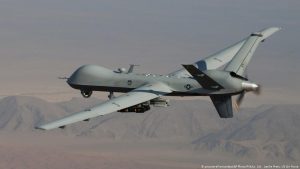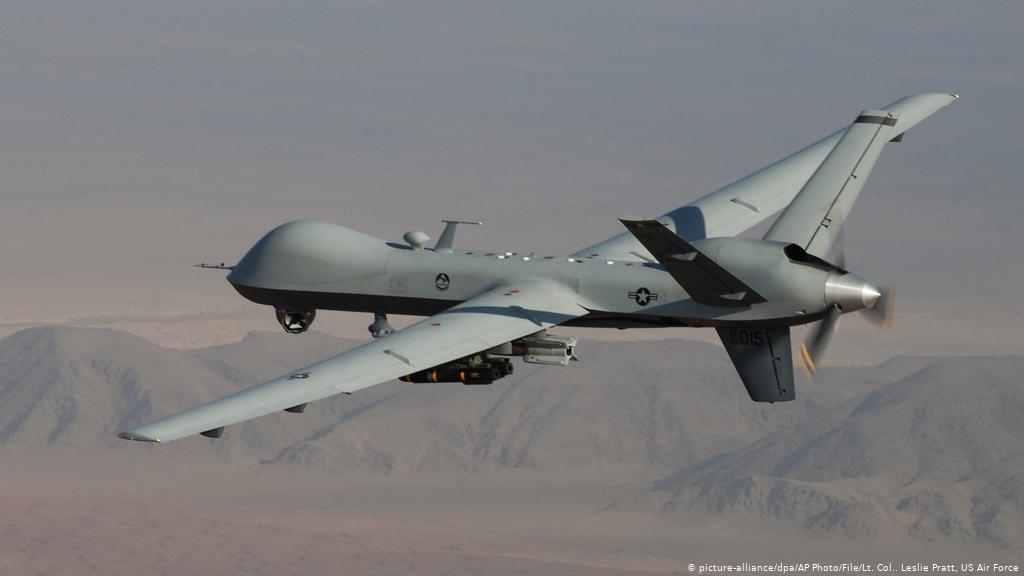By Elizabeth Jacobs
Over the past few decades, the United States, alongside other countries, have revealed new technologies that have sparked conversation of how to use the technology in an international law realm. For one, some of these technologies can be used as war weapons, sparking a particular interest in international law.
Drones are of particular interest for scholars in the international law field. Broadly, “drones, or unmanned aerial vehicles (UAVs), are aircraft controlled remotely or autonomously via computer without a human pilot.”[1] From the basic definition, it is clear that drones may pose questions regarding safety, control and regulation.
Since drones are a rather new technology and can be used in military war missions, drones have also made their way into the conversation regarding armed conflict. Drones have a variety of uses, which has created problems in how to regulate the technology. Specifically, one aspect of drones that draws concern is how much is truly unknown about the technology, the wide variety of uses, and the best way to execute its use.
There have been several technologies that affect international terrorism and the law of armed conflict. Here, there are several viewpoints on how drones have made an impact and what kind of law should be implemented to control the use of this new technology. Overall, there have been growing concerns as to how drones will be used by countries for terrorism purposes.[2]
Drone technology is not just a popular concept in the United States but is talked about universally. Drones have a broad variety of uses, including recreational ones. It is important to note that a drone someone could go buy at a store is not similar to the one used in military efforts. While drones may be seen as a fun “toy” to some, drones can be invasive when used in international contexts.[3] Drones’ variety of contexts are cause for concern to some because often it is unclear whether a drone flying in the air is a threat or one somebody bought down the street for recreational use.[4]
In particular, U.S. drone strikes represent a significant challenge to the international rule of law. This challenge is not because drone strikes are inherently unlawful on the international spectrum, but rather because drone strikes defy straightforward legal categorization.[5] The unknown of the technology of drones have raised many legal questions.
The concern on the international law level is whether drones further or hurt the international law goal of constraining and ordering power and violence. While drones provide plausible alternatives to violence, they can also contribute to the problem. A drone can contribute to the counterterrorism mission by providing pervasive intelligence and aggressive strike capabilities.[6] Clearly this technology can further support terrorism and violence, which clearly violates the legal goal of constraining violence.
It is clear that new technologies are raising questions about what effect they should have on legal measures, especially when some of the technology’s capabilities are unknown. There are a variety of plausible solutions, but ultimately, how international law handles new technologies is ever evolving. It is important that international law continue to change alongside the technologies to better guarantee its safeguarding.
[1] Christopher J. Coyne & Abigail R. Hall, The Drone Paradox: Fighting Terrorism with Mechanized Terror, 23 INDEP. REV. 51, 51 (2018).
[2] Renske van der Veer, Terrorism in the Age of Technology, CLINGENDAEL (Dec. 4, 2019, 10:28 PM), https://www.clingendael.org/pub/2019/strategic-monitor-2019-2020/terrorism-in-the-age-of-technology/.
[3] Id.
[4] Id.
[5] Rosa Brooks, Drones and the International Rule of Law, 28 J. ETHICS & INT’L AFF. 83, 83 (2014).
[6] Alexander Farrow, Drone Warfare as a Military Instrument of Counterterrorism Strategy, 28 AIR UNIV. 4, 8-10 (2016).

Image Source: http://opiniojuris.org/2020/05/22/tools-to-violate-international-law-armed-drones-in-germany-and-the-governments-legal-position/
